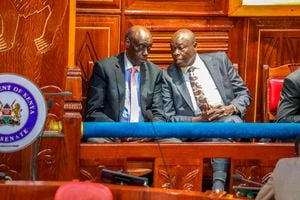There is need to involve youth in family planning
More information on family planning means the youth can make better choices, such as safe sexual practices, avoiding unwanted pregnancies, STIs and HIV
The Kenya Population and Housing Census 2019 shows of 46 million Kenyans, 35 million are under 35 years.
That means 75 per cent are youth. Adolescents aged 10-19 constitute 11.6 million, or 24.5 per cent, and youth between 18-34 years constitute about 13.8 million, which is about 29 per cent. That is a very big portion of Kenyans, 53.5 per cent, of reproductive age.
The country has been recording teenage pregnancies at an alarming rate with the cases increasing during Covid-19. A Ministry of Health report shows some 47,000 pregnancy cases among teenagers (10-19 years) in January and February last year.
There is, however, an increasing lack of awareness of reproductive health and rights that could be limiting young people from making informed choices. Only a few of them are aware that they have power over their bodies and are allowed to make better decisions in accessing information and services that promote their reproductive health.
Better choices
More information means youth can make better choices, such as safe sexual practices, avoiding unwanted pregnancies, STIs and HIV and reporting and seeking help over sexual violence. But how can they make the choices if they are not at the decision-making table on matters that affect them?
Often, decisions about youth’s reproductive health are made with a few or none of them being allowed to meaningfully participate by contributing their ideas. Sometimes, the youth population is not diverse enough to have their ideas incorporated in the final prints, tools and strategies around their health. Youth are very creative and energetic.
They are willing to create change on issues surrounding them, allowing them to be part of all stages of making the strategies and final decision of what works for them. It is hard to incorporate everyone’s idea but the representation should be reasonable as an issue affects people differently.
Information and awareness
Don’t assume what works for them. There is a need to increase the information and awareness on reproductive health. Contraception being the focal point increases the gain of timeously accessing the correct methods that suitably work for them. That reduces the risk of unwanted pregnancy, school dropout, unsafe abortion and complications and death from teenage pregnancy and delivery.
Another concern is the unmet needs for contraception. This is the gap between the sexually active women who do not want to get children at that time but are not on a family planning method. That may be due to perception, experience and the fear of future infertility if they used the methods. This, in turn, causes unwanted or mistimed pregnancies, putting them at risk of unsafe abortion.
It would be prudent to involve girls and young women in the programmes and research. That helps to understand the cause of the phenomenon, hence be able to clearly understand and effectively reduce the gap. Target planning, extensive research, and involvement can help in meeting the diverse young people’s contraception needs.
Ms Sitati is a sexual and reproductive health [email protected].





